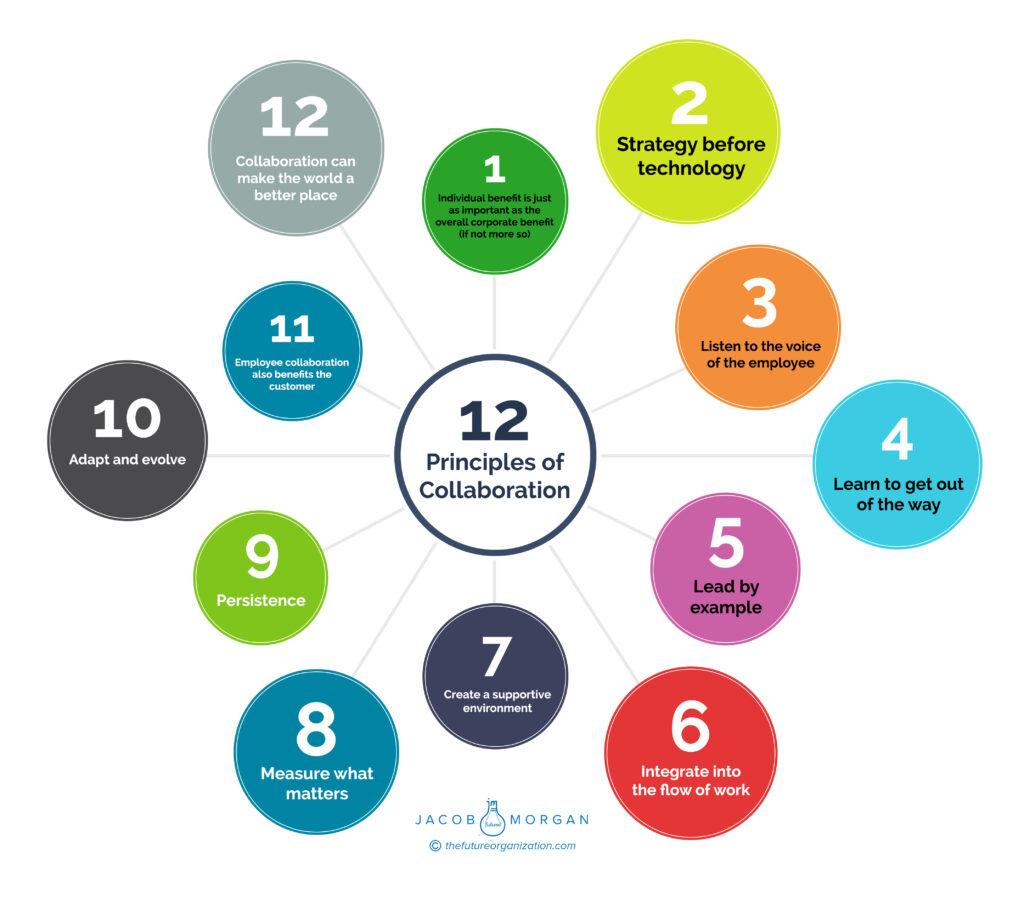With the current pandemic, millions of people around the world are working from home. This will likely continue over the coming months but even after the pandemic is over, I expect we will see a dramatic rise in flexible work arrangements. However, in order for these efforts to be successful organizations need to use a new set of digital technologies and embrace a new way of working, something I wrote about way back in 2012 with my book, The Collaborative Organization.
At the time I had the opportunity to work with and research hundreds of organizations to see how the very best were making use of digital technologies to connect people to each other and to information around the world (especially applicable to flexible work). Technology is the central nervous system of every organization but it can be tricky. After all no two companies are alike in terms of strategy, budgets, teams, corporate cultures, and the like. So how can we know what makes some organizations successful?
The answer lies in chess…
I happen to be a huge chess fanatic. I play competitively, take lessons with a grandmaster, and study several hours a week. Did you know that there are more possible moves in a game of chess then there are atoms that exist in the universe? Chess is virtually an infinite game yet somehow we have grand-masters who are always at the top. How do they succeed in this infinite game? They identify patterns and look for identifiable scenarios. This same approach is applicable for getting teams to work together in virtual environments using technology. So having said that, here are the 12 common habits or success factors for these collaborative organizations.
140 of the world’s top CEOs identified a specific set of 9 skills & mindsets that are crucial for leaders to master. Learn what they are and hear directly from these leaders by downloading the PDF below.

 Lead by example
Lead by example
If leaders at your organization don’t use and support collaboration and communication tools and strategies then why should anyone else? Leaders are very powerful instruments to facilitate change and encourage desired behaviors. So if you want to make flexible work arrangements work, then make sure your leaders are on the front lines.
Individual benefit vs corporate benefit
For those who might be hesitant, don’t focus on the overall corporate value and benefit of flexible work programs or collaboration technologies. Employees want to know how change will impact them on an individual basis. How will this make their jobs and lives easier? That’s the messaging and the story-telling you need to focus. There’s a difference between, “this will save the company $520,000 a year” vs “this will help make sure you can attend the important family events in your life.”
Strategy before technology
Before rushing to pick that shiny new collaboration and communication platform focus on developing a strategy which will help you understand the “why” before the “how.” This is crucial for the success of any collaboration initiative. You don’t want to be in a position where you have deployed a technology without understanding why. Especially during this pandemic, make it clear what the desired goals are so everyone is on board.
Learn to get out of the way
By trying to enforce and police everything, you stifle collaboration and communication within your organization and eventually employees won’t want to take advantage of either the technologies or the programs that you offer. Some best practices and guidelines are fine to have but let your employees do what they need to do.
Listen to the voice of the employee
We are always so adamant about listening to the voice of the customer, what about the voice of the employee? When going down the collaboration road within your organization it’s important to make employees a part of the decision making process from step one. Listen to their ideas, their needs, and their suggestions and integrate their feedback into your technology and strategy.
Integrate into the flow of work
Collaboration should never be seen as an additional task or requirement for employees. Instead collaboration should fit naturally into their flow of work. For example, with my virtual team of ten employees turning on Skype every morning and looking at what’s going in Asana is how we all start our day, it’s not an afterthought or something additional we do…it’s how we get things done.
Create a supportive environment
If your organization focuses on rewarding employees for individual performance as the main driver of success then it will become quite hard to encourage employees to share and communicate with each other (digitally or physically!). Why would they want to? There is nothing wrong with rewarding employees for great performance but it’s also crucial to reward teamwork. For example organizations can make a percentage of an employee’s bonus tied to how well they collaborate with their co-workers. A supportive environment also means having training and education resources available for employees as well as evangelists within the organization. Considering today’s environment this could be something as simple as how to look great on a video conference call or how to run a virtual meeting successfully.
Measure what matters
There are a lot of things that an organization can measure but it doesn’t mean that all of these things should be measured. Focus on the metrics that matter to your organization and the ones that are tied back to a business case. Some organizations focus on “busy” metrics such as comments submitted or groups created. Others focus on metrics such as engagement (defined as how connected and passionate an employee feels about the company and the work they do).
Persistence
I believe that collaborative initiatives shouldn’t be pilots they should be corporate initiatives. This means that after COVID-19 passes, we shouldn’t go back the old ways of doing things. These efforts can certainly take time but if the organization makes the decision that collaboration is the direction they want to go down then that’s it. No giving up and no turning back. Moving forward, organizations cannot succeed without connecting their employees and their information. Making collaboration work isn’t an option it’s THE option.
Adapt and evolve
It’s important to remember that collaboration is perpetual. It’s a never ending evolution as new tools and strategies for the workplace continue to emerge. This means that it’s important for your organization to be able to adapt and evolve as things change. Keep a pulse on what’s going on in the industry and inside of your organization. This will allow you to innovate and anticipate. So many organizations were caught off guard by this pandemic because they had neither the tools, the training, the leadership, or the guidelines to help make flexible work successful.
Employee collaboration also benefits the customer
While customer collaboration and employee collaboration do solve very different and unique problems, employee collaboration has tremendous value to your customers. Employees are able to provide a better experience and superior support by being able to tap into internal experts, information, and resources which can be used to help customers. Consider a customer that is working with a support representative who unfortunately does not know how to solve the customer’s problem. The employee however has access to the entire organization to find the right information and share it with the customer. This isn’t possible without technology.
Collaboration can make the world a better place
Perhaps the most important principle of collaboration and using these emerging technologies is that they can make the world a better place. Sure, collaboration can make our employees more productive and benefit our customers. But collaboration also allows employees to feel more connected to their jobs and co-workers, reduces stress at the workplace, makes their jobs easier, allows for more work freedom, and in general makes them happier people. This means less stress at home, less arguments with spouses, and more time to spend with loved ones. Collaboration not only positively impacts the lives of employees at work but also at home.
Some of the 12 principles above are a bit easier and more immediate to implement. However, in the long run, it’s going to be crucial to focus on all 12 principles to help ensure success with flexible work arrangements including strategy and technology.
__________________________________________________________________________
If you enjoyed the article and want more content like this here’s what you can do:
1. Subscribe to The Future of Work Podcast where I interview business leaders around the world each week.
2. Grab a copy of The Future Leader and learn all the skills and mindsets that future leaders must possess to be successful. It has been endorsed by the CEOs of MasterCard, Best Buy, Oracle, Audi, Unilever, Domino’s Pizza, Ritz Carlton, Kaiser, and Marshall Goldsmith.
3. If you are or want to be an entrepreneur than my wife and I just launched a brand new podcast on how to Be Your Own Boss, called the BYOB Podcast where we share what we did and how we did. You can subscribe to that here.
